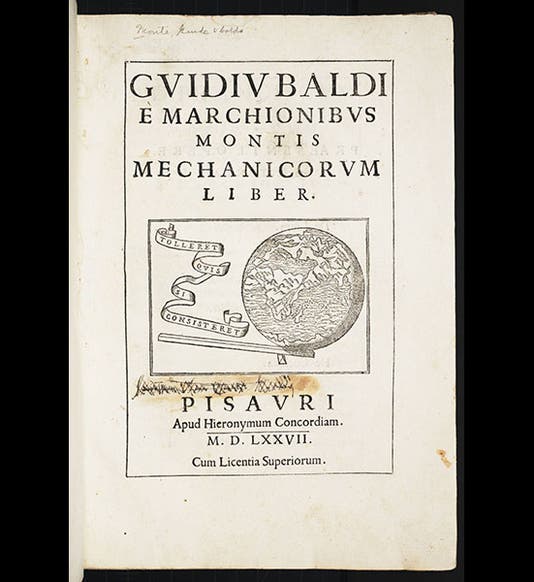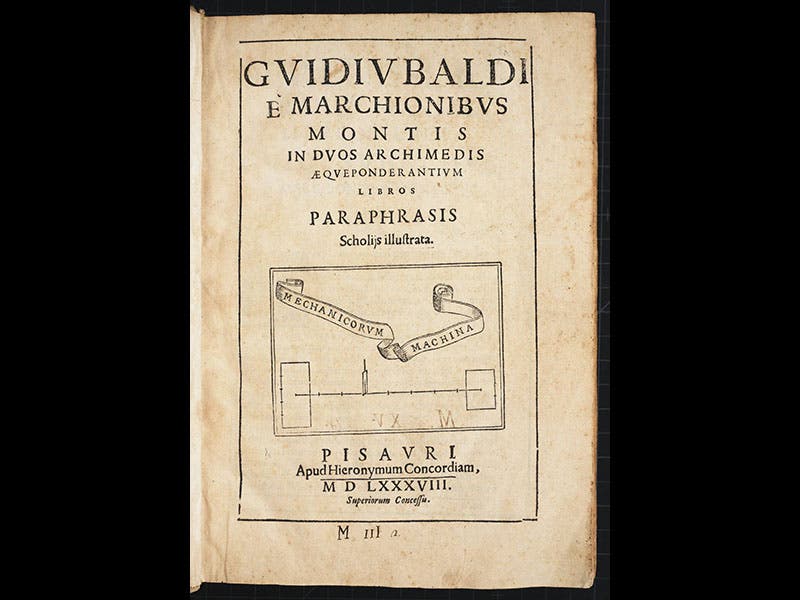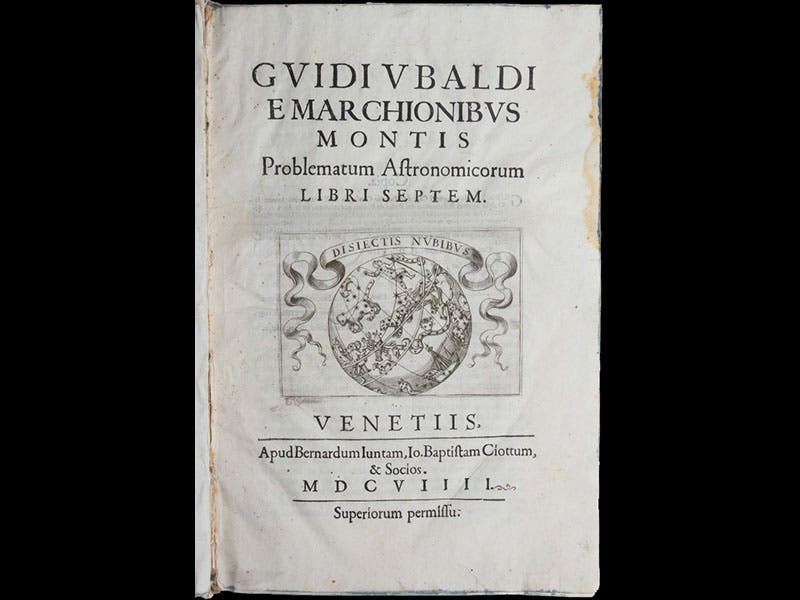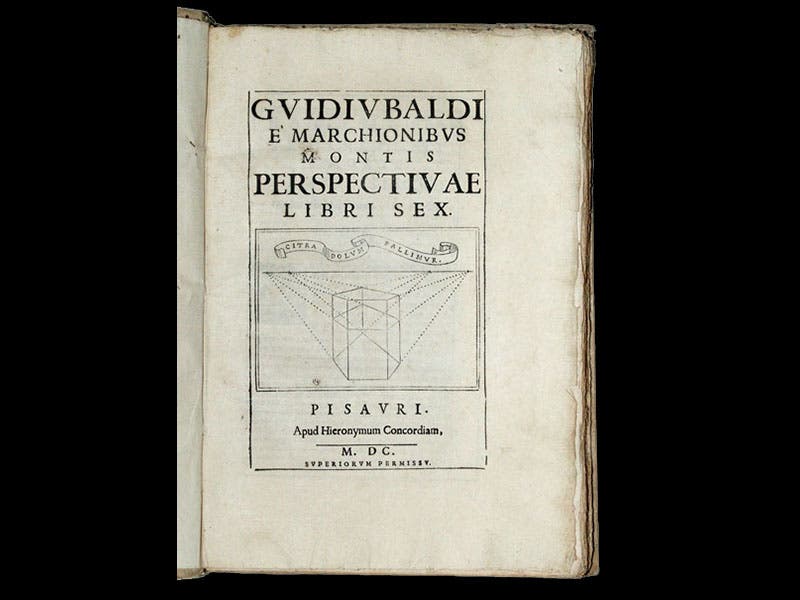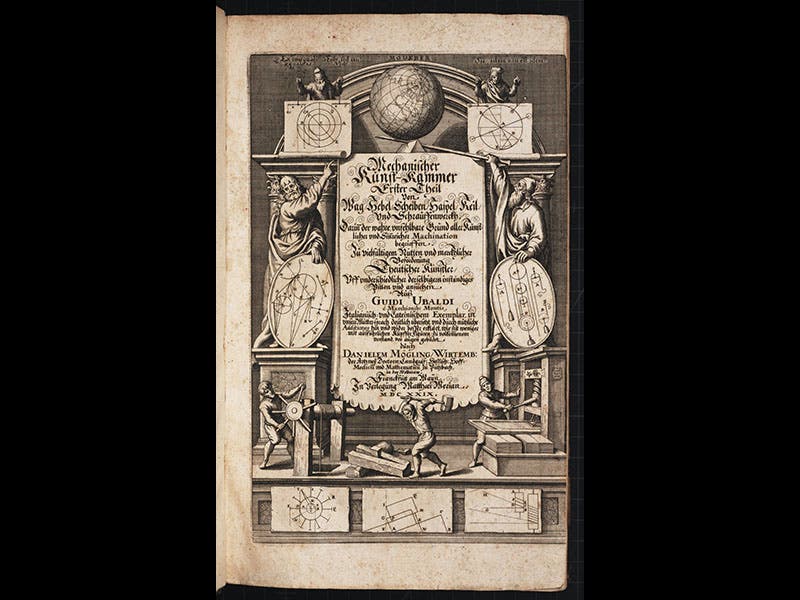Scientist of the Day - Guidobaldo del Monte
Guidobaldo del Monte, an Italian mathematician, was born Jan. 11, 1545. Del Monte was instrumental in what is known as the “Archimedean revival” of the late 16th century. The physics of motion had been ruled by the authority of Aristotle since, well, since Aristotle, but a growing number of mathematicians came to believe that the non-mathematical physics of Aristotle was inferior to the mathematically-based physics of the great Syracusan, Archimedes. Del Monte, who was a nobleman living in Pesaro, near Urbino, somehow came to know the young Galileo, who was in Pisa at the time, which is nowhere near Pesaro. Galileo was looking for a job, and del Monte was instrumental in securing Galileo’s his first post in 1588, teaching mathematics at Pisa. Galileo didn’t really like the position, or at least the pittance of money that came with the job, so Del Monte helped Galileo get his next appointment at Padua in 1591, where Galileo would teach until 1610.
Del Monte published a number of handsome books on Archimedean mechanics there in Pesaro, including his Mechanicorum liber (Book on mechanics, 1577, see first image above) and In duos Archimedis aequeponderantium libros (Archimedes’ Two Books on Floating Bodies, 1588,), as well as books on astronomical instruments (third image) and perspective (fourth image); we are fortunate to have very nice copies of each of them in our History of Science Collection. Nearly all of Del Monte’s books have large title-page vignettes appropriate to the theme of the book; the Mechanicorum liber, for example (first image) has an engraved vignette that illustrates Archimedes’ maxim: give me a place to stand, and I will move the earth.
It is interesting that when a German edition of del Monte’s works was published in 1629, the emblematic-vignette style had given way to a completely different type of engraved title-page, which makes its points in rather a different manner (fifth image).
Dr. William B. Ashworth, Jr., Consultant for the History of Science, Linda Hall Library and Associate Professor, Department of History, University of Missouri-Kansas City. Comments or corrections are welcome; please direct to ashworthw@umkc.edu.

